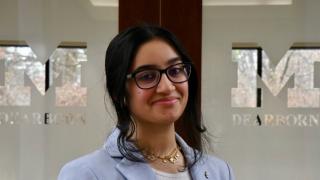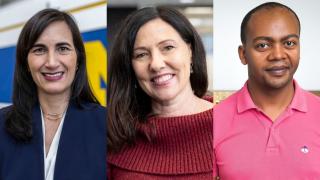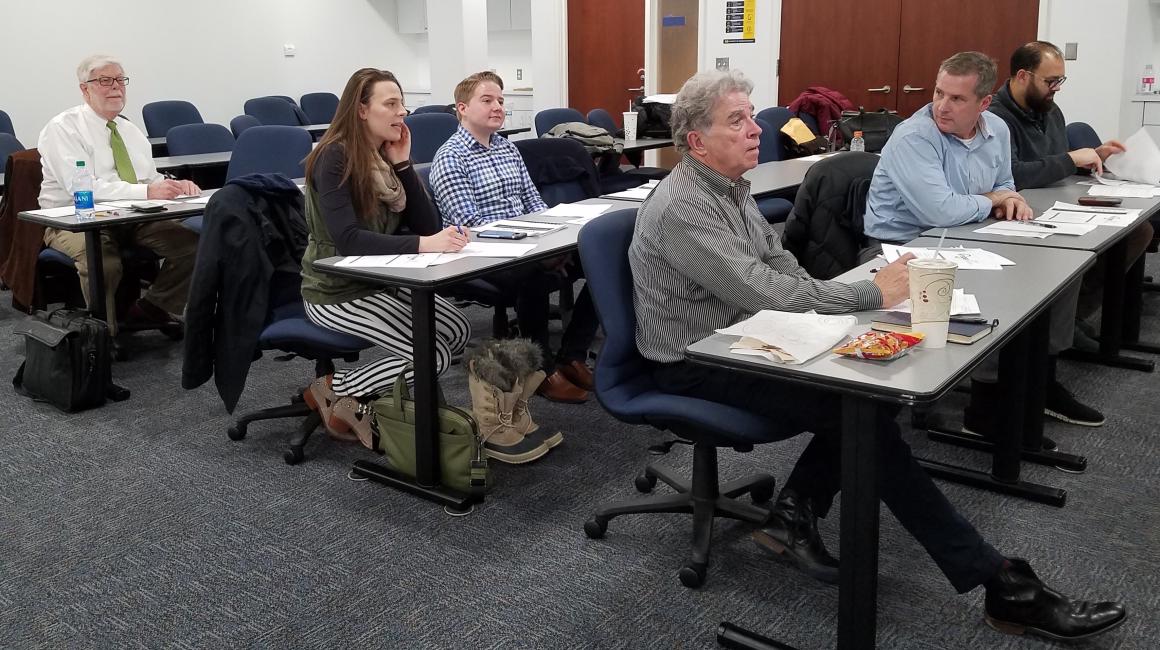
This article was originally published on January 21, 2020.
Hassan Doghman sat in College of Business classroom waiting for the presentations to begin. But instead of standing in front of the room to give one, the 2017 B.B.A. and 2018 M.B.A. was the one listening and giving advice.
Doghman said his time on campus prepared him for the tax associate role he has with PricewaterhouseCoopers today. Doghman says it was the COB connections to industry and real world experiences that gave him an edge.
“It is very interesting to share insights with students since I have taken this course in the past and applied concepts in the real-world,” says Doghman, who sat on a panel in Business Communication Lecturer Tim Hartge’s class. “I have done many national presentations at PwC and I want to help students understand the strategic aspect of presentations, image, executive presence, etc. is a key to their development at UM-Dearborn and professionalism.”
In efforts to help students better understand business concepts and application, several COB courses incorporate this connected and experiential learning in their classrooms. And it’s what gives COB’s program and its graduates the ability to stand out.
Here are some highlighted courses that use this approach. Please let us know if you have a suggestion for a course to highlight in the future.
Professor Charu Chandra’s Decision Sciences 635 Analytics Experience Capstone course.
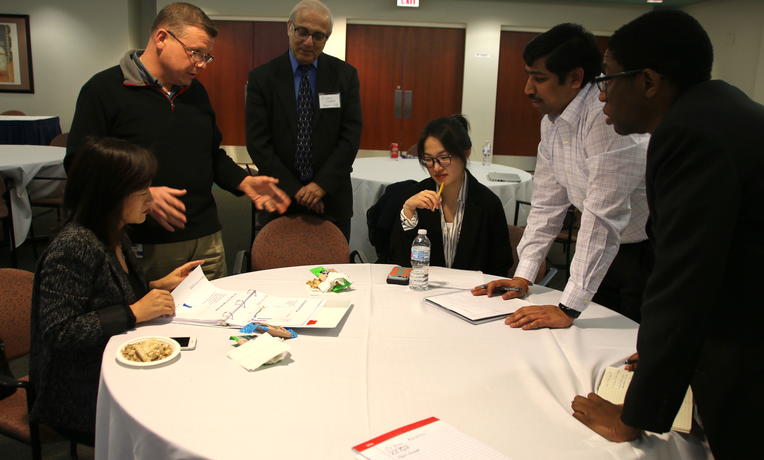
DTE Energy is looking for a more accurate model on predicting severe weather staffing needs. And they have partnered with Professor Charu Chandra’s capstone course in an effort to find solutions.
Using historical data evidence, students shared a model they created to give an estimation of outage job restoration time and crew required. They were also looking at the average fix times for a variety of job types.
DTE Emergency Preparedness and Response executives were in the audience listening and giving feedback for the presentation.
“We are reasonability good at predicting restoration based on prior knowledge, but we want an exactness to it. These students have dissected restoration to various job types to give us a more accurate sense of the minutes of each of those job types,” said DTE Emergency Preparedness and Response Manager Russ Pogats. “We are trying to change the aspect from an estimate to a promise. And that is a shift for us and everyone else in the industry. And information these guys are looking at will help us get there.”
Another student group worked with XPO Logistics Managed Expedite Team to analyze the cost-per-mile metric across various assembly plants and to forecast any changes to that cost-per-mile metric.
Chandra developed the course so that graduate students had the opportunity to work with a UM-Dearborn faculty adviser and a company mentor to model, analyze and recommend a solution for a significant business problem. Previous industry partners have been Ford Motor Company, Henry Ford Health Systems, St. Luke’s Hospital and Gardner White Furniture.
“It’s structured like a consulting relationship,” said Chandra, who finds and fosters the business partnerships. “I’m there to help steer the students, but not to take their project over. I won’t be there with them once they graduate, and I want them to know how to show proven results and be successful.”
Assistant Professor David Kaufman’s Decision Sciences 633: Data Mining for Business Applications course.
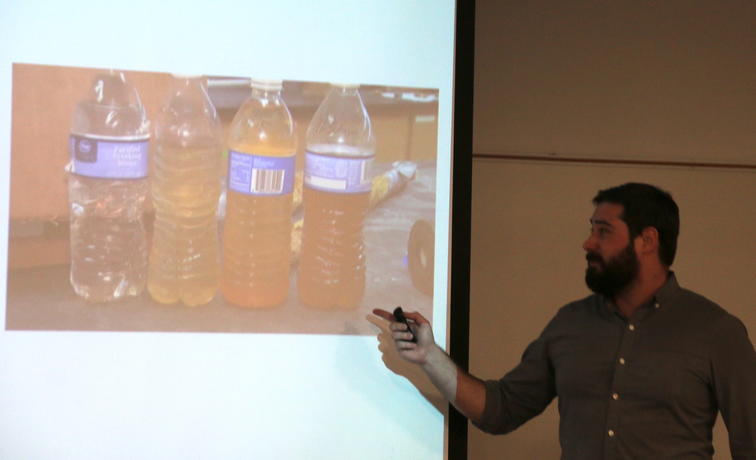
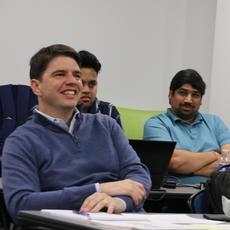
David Kaufman has a thing about creating models that give accurate predictions; he previously worked with a major delivery service company to design algorithms for routing before precise package locations were a standard thing.
And he wants his students to understand how these sometimes difficult-to-understand models work and how they can be used for public good.
So Kaufman brought in his connections from U-M’s Michigan Institute for Data Science (MIDAS) like U-M data scientist Jared Webb to speak to his class and share data sets from Webb’s research on the water line replacement in the City of Flint, which has had a public health crisis over the city’s water supply since 2014.
In the project, students had to use a variety of predictive models to look at the partial data collected and decide — based on information like home build year and geographic location gleaned from the city of Flint archives and other places — which pipes to replace, the order to replace them and a cost analysis.
“We know there are a lot of bad pipes in Flint. And a casual observer might say why don’t you replace all the pipes? But that’s not feasible from a financial or time perspective,” said Michael Smith, graduate student. “So a more realistic approach is to predict the lines we need to replace. And it’s important to note that this was a humanitarian crisis, so it is important to take this seriously and get it right.”
Student groups gave presentations on how they clean the data, analyzed it, chose and tested models and gave results and recommendations.
Kaufman said while the research data sets used in class are real, the project is purely an exercise to help students see how the field has the ability to use predictions to help create positive change and he uses the project as a way to connect them to world-renowned data science researchers.
Lecturer Tim Hartge’s Marketing 458: Advertising course
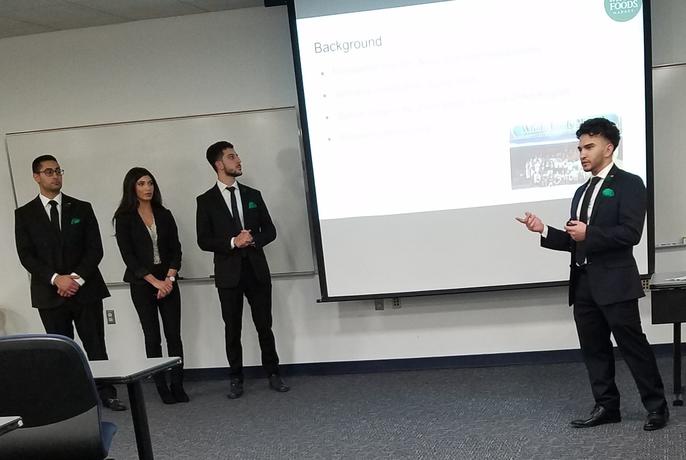
Several of Lecturer Tim Hartge’s former students — now employed through major corporations like PricewaterhouseCoopers and Google — came back to the COB classroom to critique and guide students on how to create a successful ad campaign and give a strong presentation.
But before they got there, Hartge spent the semester preparing his advertising students by giving them marketing plans — created by Hartge’s graduate students at U-M’s Ross Business School — and developing an advertising campaign around them. Hartge said the marketing plans focused on the food industry, which is a hot competitive market right now.
Hartge says he taught them strategic steps to take — like visualizing the target audience and creating messages to get the attention of that particular audience. “Who is this ad for? What am I telling them? How much social media do I use? What media do we spend our dollars on for the best built the brand? These are all important steps that cannot be missed,” he said. “Theories and textbook examples aren’t always real to students. But when students work on an ad campaign from an actual marketing plan, it changes the game. You take it more seriously. You want honest feedback. For me, it’s all about taking their education to the next level for workforce readiness.”
Chris Coscia, a former student of Hartge’s, is an associate account strategist at Google who said classes taught by his COB educators prepared him for his career in digital advertising with the multinational technology company.
He said he was honored to judge the student presentations and was impressed with what he saw. “Starting with the client goal/objectives and working backwards towards a solution is something I do in my current role at Google, so it was very impressive to see this reflected across the groups,” said Coscia, 2018 B.B.A.
Marketing major Kristina Lee said having industry professionals judge the presentations — Lee’s campaign focused on dispelling the idea that Whole Foods was too expensive for a younger demographic — gave her insight into the thought process of industry professionals and how she can professionally apply what’s learned in class.
“Receiving feedback from an expert who is not your professor gives you different perspectives and allows you to look at your work differently. It’s also a very cool concept to be able to share your own personal ideas to industry professionals, learn from them, and expand your network.”
Coscia agrees that it’s helpful — but in a different way for him. He said returning to Hartge’s class reminded him of the importance of his UM-Dearborn education.
“Being able to provide actionable feedback and insights to the students also benefited me by making me realize the extent of my knowledge after only 18 months after graduation. All of this is proof that UM-Dearborn truly creates the leaders and the best. Go Blue!”

